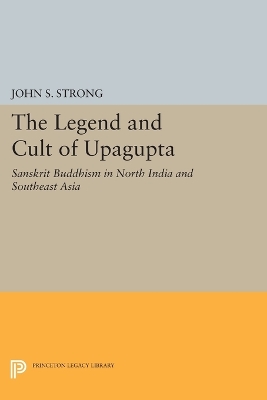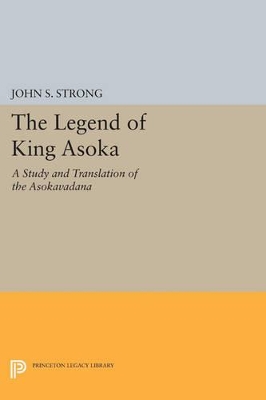Princeton Legacy Library
1 primary work • 2 total works
Book 5017
The Buddhist monk Upagupta, who preached and taught meditative practices in Northwest India over two thousand years ago, is venerated today by the laity in parts of Burma, Thailand, and Laos as a protective figure endowed with magical powers. In this monumental work John Strong offers a systematic presentation of the Indian and Southeast Asian legends and rituals surrounding this popular saint. Once considered by Buddhist authorities as only marginally important, Upagupta emerges here as a central, ubiquitous figure within the Buddhist world. The author demonstrates the remarkable continuity among traditions focused on Upagupta in ancient Sarvastivadin Sanskrit materials, key Pali texts, medieval Thai and Burmese texts, and contemporary oral traditions and religious rituals in Southeast Asia. In so doing he reflects the orientation of popular Sanskrit Hinayana Buddhism, which allows for new perspectives on such classic questions as the nature of enlightenment, the role of asceticism, the problem of evil, the worship of the Buddha image, the veneration of saints, master-disciple relationships, the treatment of heterodoxy, and the relation of myth and ritual.
Originally published in 1992. The Princeton Legacy Library uses the latest print-on-demand technology to again make available previously out-of-print books from the distinguished backlist of Princeton University Press. These editions preserve the original texts of these important books while presenting them in durable paperback and hardcover editions. The goal of the Princeton Legacy Library is to vastly increase access to the rich scholarly heritage found in the thousands of books published by Princeton University Press since its founding in 1905.
Originally published in 1992. The Princeton Legacy Library uses the latest print-on-demand technology to again make available previously out-of-print books from the distinguished backlist of Princeton University Press. These editions preserve the original texts of these important books while presenting them in durable paperback and hardcover editions. The goal of the Princeton Legacy Library is to vastly increase access to the rich scholarly heritage found in the thousands of books published by Princeton University Press since its founding in 1905.
An English translation of the Asokavadana text, the Sanskrit version of the legend of King Asoka, first written in the second century A.D. Emperor of India during the third century B.C. and one of the most important rulers in the history of Buddhism, Asoka has hitherto been studied in the West primarily from his edicts and rock inscriptions in many parts of the Indian subcontinent. Through an extensive critical essay and a fluid translation, John Strong examines the importance of the Asoka of the legends for our overall understanding of Buddhism. Originally published in 1984. The Princeton Legacy Library uses the latest print-on-demand technology to again make available previously out-of-print books from the distinguished backlist of Princeton University Press. These editions preserve the original texts of these important books while presenting them in durable paperback and hardcover editions. The goal of the Princeton Legacy Library is to vastly increase access to the rich scholarly heritage found in the thousands of books published by Princeton University Press since its founding in 1905.

